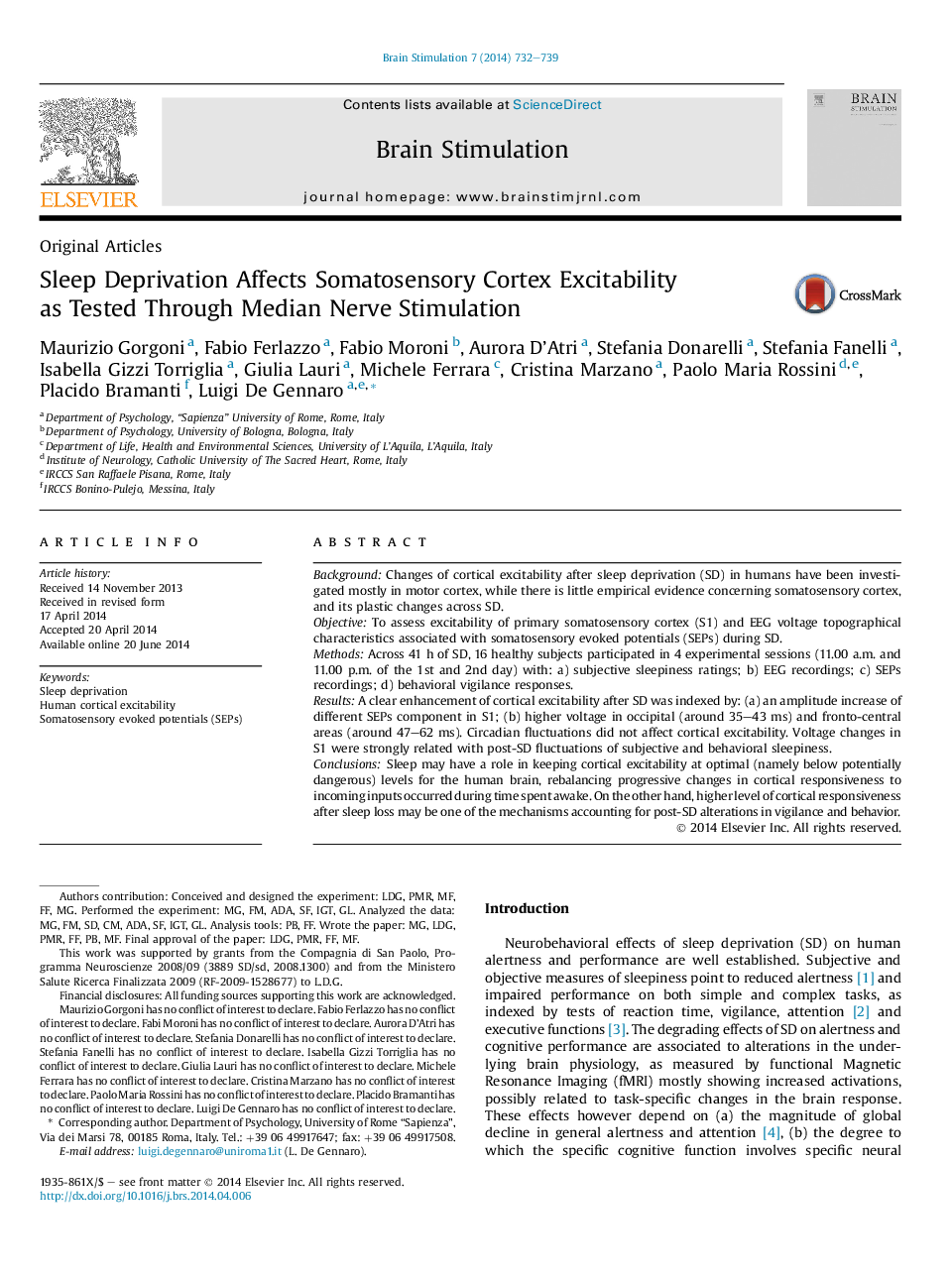| Article ID | Journal | Published Year | Pages | File Type |
|---|---|---|---|---|
| 6005600 | Brain Stimulation | 2014 | 8 Pages |
BackgroundChanges of cortical excitability after sleep deprivation (SD) in humans have been investigated mostly in motor cortex, while there is little empirical evidence concerning somatosensory cortex, and its plastic changes across SD.ObjectiveTo assess excitability of primary somatosensory cortex (S1) and EEG voltage topographical characteristics associated with somatosensory evoked potentials (SEPs) during SD.MethodsAcross 41Â h of SD, 16 healthy subjects participated in 4 experimental sessions (11.00 a.m. and 11.00 p.m. of the 1st and 2nd day) with: a) subjective sleepiness ratings; b) EEG recordings; c) SEPs recordings; d) behavioral vigilance responses.ResultsA clear enhancement of cortical excitability after SD was indexed by: (a) an amplitude increase of different SEPs component in S1; (b) higher voltage in occipital (around 35-43Â ms) and fronto-central areas (around 47-62Â ms). Circadian fluctuations did not affect cortical excitability. Voltage changes in S1 were strongly related with post-SD fluctuations of subjective and behavioral sleepiness.ConclusionsSleep may have a role in keeping cortical excitability at optimal (namely below potentially dangerous) levels for the human brain, rebalancing progressive changes in cortical responsiveness to incoming inputs occurred during time spent awake. On the other hand, higher level of cortical responsiveness after sleep loss may be one of the mechanisms accounting for post-SD alterations in vigilance and behavior.
